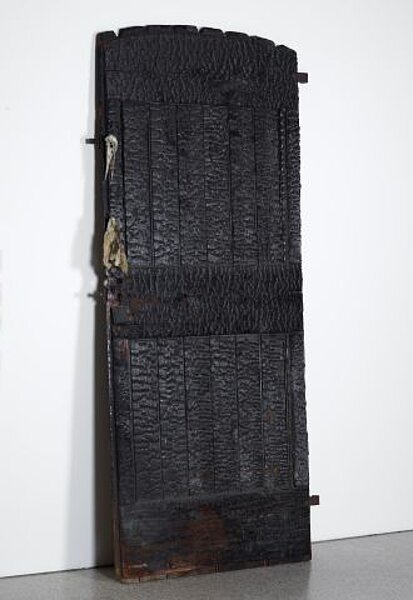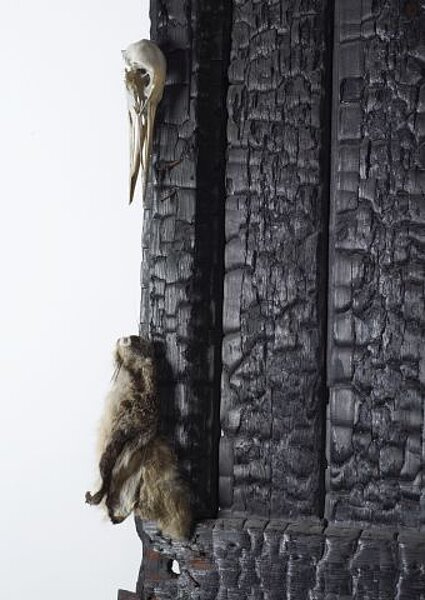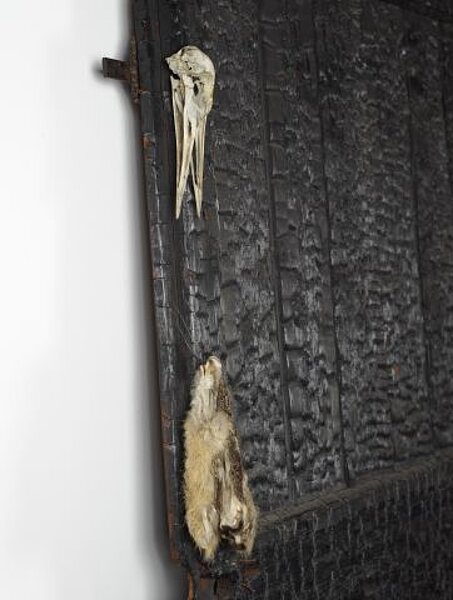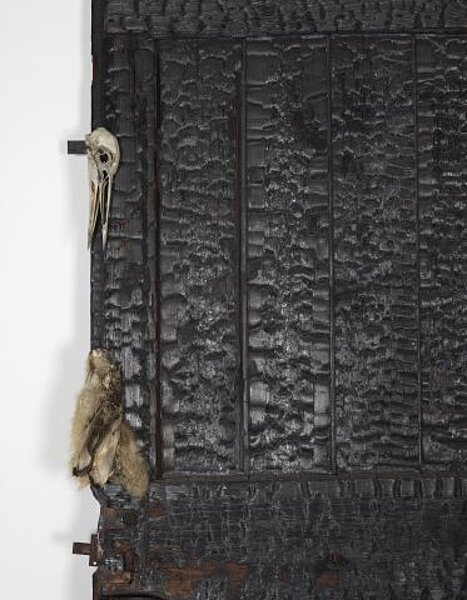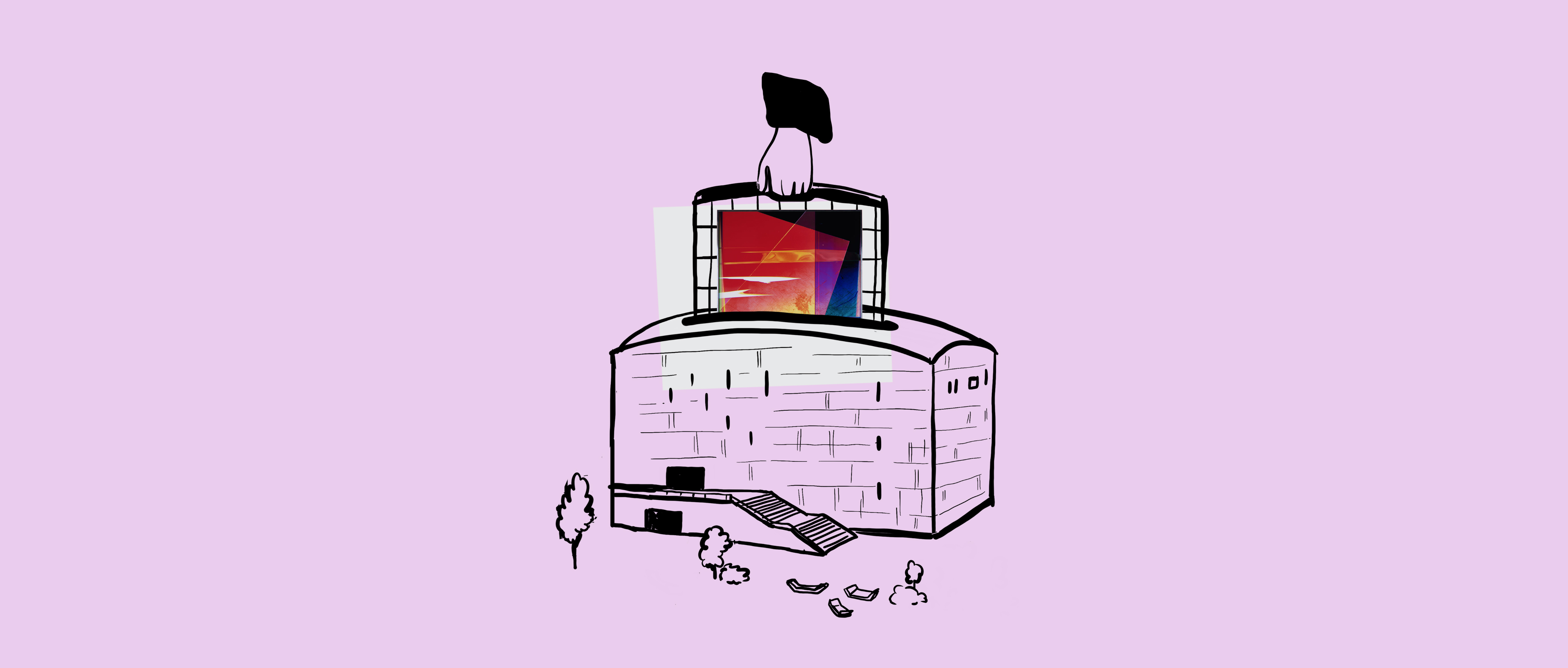
Beuys, Joseph
Tür
Door
1954 - 1956
| Object description | Burned door with hare ears and heron skull |
|---|---|
| Dimensions |
Objektmaß:
height: 210 cm,
width: 108 cm,
depth: 10 cm,
height: 16,5 cm,
width: 6 cm,
depth: 4,5 cm,
height: 27 cm,
width: 11 cm,
depth: 4,5 cm
|
| Year of acquisition | 1978 |
| Inventory number | P 109/0 |
| Creditline | mumok - Museum moderner Kunst Stiftung Ludwig Wien, ehemals Sammlung Hahn, Köln |
| Rights reference | Bildrecht, Wien |
| Further information about the person | Beuys, Joseph [GND] | Beuys, Joseph [ULAN] |
| Literature |
Beuys.Die Revolution sind wir museum moderner kunst.SAMMLUNG HAHN Joseph Beuys. Schwerpunkte der Sammlung Das XX. Jahrhundert ein Jahrhundert Kunst in Deutschland Museum der Wünsche Aufbauen - Zerstören. Phänomene und Prozesse der Kunst Joseph Beuys : Parallelprozesse ; Archäologie einer künstlerischen Praxis [Symposium "Joseph Beuys. Parallelprozesse 6. bis 9. Januar 2011 Düseldorf ... als wissenschaftliche Begleitung zur gleichnamigen Ausstellung der Kunstsammlung Nordrhein-Westfalen in Düsseldorf] |
Joseph Beuys in an interview: "This is a burned door from a studio in Heerdt near Düsseldorf that I lived in from 1951 with my friend the poet Adam Reinhard Lünen. I did not burn the door, it was an explosion in the building that did this and burned it. When I left the studio, around 1958, I took this door with me and hung just two props on it. These are two hare’s ears and the skull of a heron, anatomical parts of animals that later gained some significance in my actions." The Düsseldorf artist leaned this charred door up against the wall of the exhibition gallery, where the broken black lines almost looked like the cracked surface of an old oil painting. Here Beuys exhibited an object taken from an everyday context—an objet trouvé. It is clear that this wood was damaged by fire and the flames have left their mark. The charred remains are more than just a concrete relic, however. They also indicate the fundamental destructive force of fire and an archetype of destruction and renewal. Beuys frequently used prepared animal parts in his installations, like the heron’s skull and the hare’s ears here. But they are not meant as lucky or protective charms, as they are often in popular myth. And even superstitious people rarely carry around hare’s paws today. They seem to come from some primeval age of myth. Beuys leaves it to us to draw conclusions from his installations and yet still keeps everything under control. His arrangements and settings are not arbitrary. They are open forms in a puzzling aesthetic repertoire in which the artist appears as a shaman.
© mumok – museum moderner kunst stiftung ludwig wien
